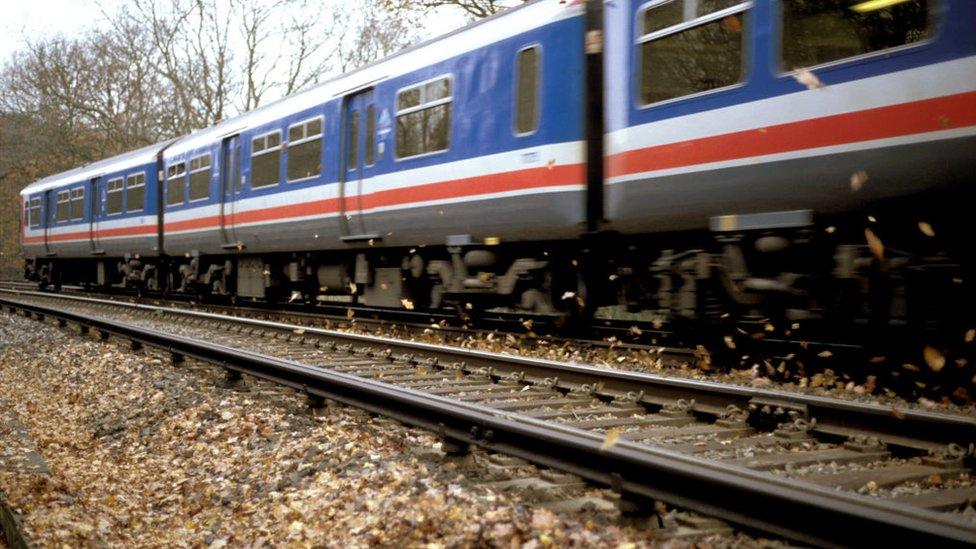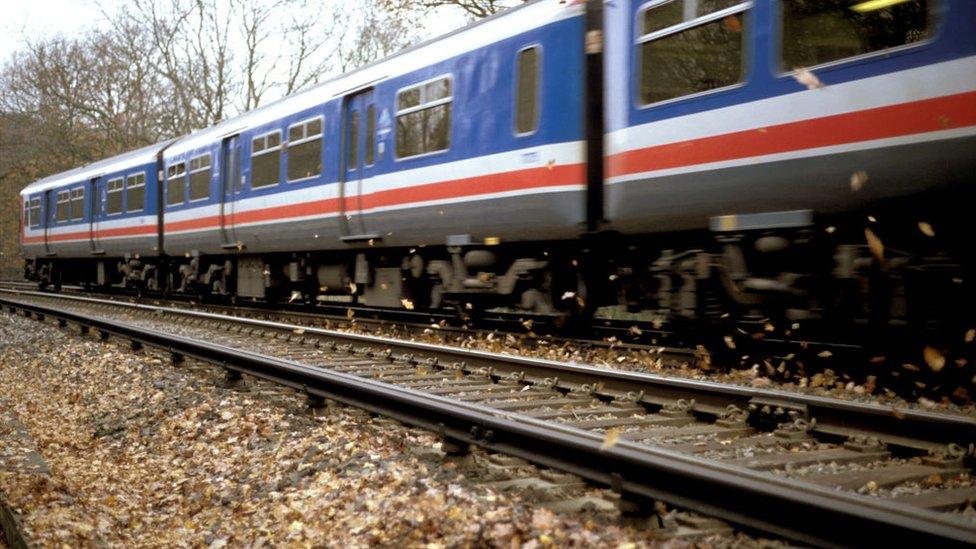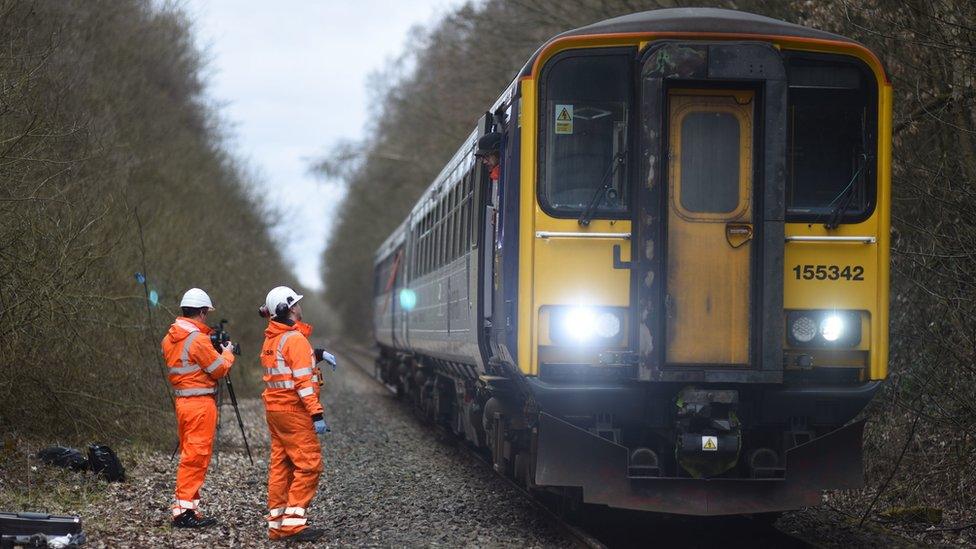Northern: Yorkshire trains trial leaves on the line solution
- Published

Leaves cause major disruption every autumn when they stick to damp rails and become compressed by train wheels
New technology to combat the age-old rail problem of leaves on the line is set to be deployed in Yorkshire.
Northern is fitting a system to 16 passenger trains which tackles slippery rails by spraying water onto them.
The technology will be used on trains operating between Leeds, Harrogate and York, as well as between Sheffield, Doncaster, Hull and Scarborough.
Leaves cause major disruption every autumn when they stick to damp rails and become compressed by train wheels.
Rail lines have traditionally been cleaned using railhead treatment trains (RHTT) which deploy high-pressure water jets followed by a gel containing sand and steel grain to boost adhesion.
But RHTTs are expensive to run, meaning some routes are left untreated.
'Tricky autumn conditions'
Trains stop safely in heavy rain, so the new system recreates those conditions by dispensing a small amount of water when slippery rails are detected.
Rob Cummings, Northern's seasonal improvement manager, said rolling out the system to more trains is "the next step in finding a solution to tricky autumn conditions".
He said: "One of the biggest risks to our performance during October and November is leaves on the line, but by helping to develop new innovative technology we aim to deliver the very best service for our passengers."
John Cooke, who co-founded Water-Trak, said: "Leaves on the line may seem like a bit of a joke, or an excuse for bad performance, but actually it's a major issue for the rail industry.
"We are really excited to be working with Northern to show how Water-Trak can help to solve the age-old problem of leaves on the line."

Why do leaves on rail lines cause delays?

Autumn-related problems cost the rail industry approximately £345m a year
Around 10 million trees line Britain's railway, and thousands of tonnes of leaves fall onto the tracks every autumn
When they stick to damp rails, leaves have a similar effect to black ice on roads, creating a slippery layer
This means trains must run at a reduced speed, accelerate slower and brake earlier
A build-up of leaves can also make it harder for signallers to detect a train's location, which causes further delays

Follow BBC Yorkshire on Facebook, external, Twitter, external and Instagram, external. Send your story ideas to yorkslincs.news@bbc.co.uk, external.
- Published7 January 2022

- Published4 October 2021
